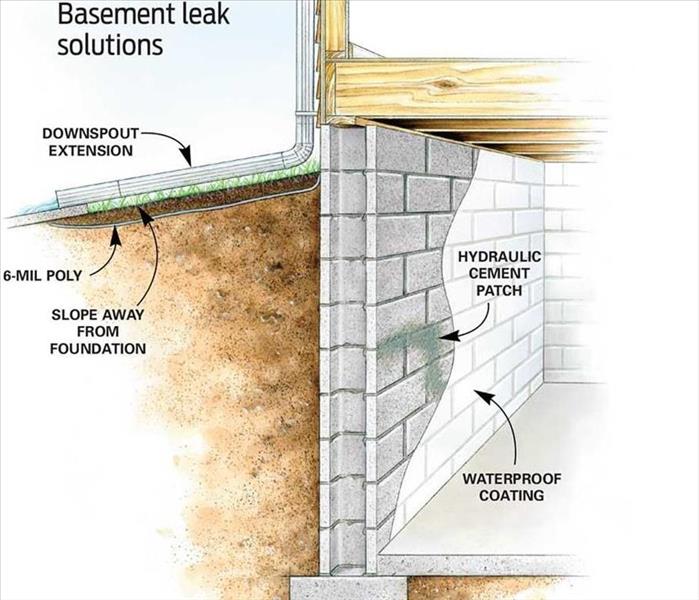Basement Water issues, Sump Pump maintenance and Water damage
10/24/2017 (Permalink)
- be a crack in the base.
- If the temperature drops near the 20°F mark, allow faucets connected to vulnerable pipes — those not protected in insulated spaces — to drip. This helps minimize the risk of burst pipes by relieving pressure if the pipes freeze.
Appliances
- Replace washing machine supply hoses at least every five years. Consider using stainless-steel mesh hoses. Keep the machine properly balanced — over time, an unbalanced machine can move, pulling free the hose connections.
- Consider turning off the water to the washing machine when it's not in use.
- Don't operate a dishwasher or washing machine while your house is unoccupied.
- Follow the manufacturer-specified maintenance for your appliances, including your water heater. Have the water heater inspected every couple of years.
Roof and Gutters
- Have your roof inspected every three years by a professional, but also check routinely for damage you can see from the ground — such as broken and missing shingles or damaged flashing. A poorly maintained roof can lead to leaks in the home and additional damage to the roof itself.
- If your roof doesn't have a drip edge or drip cap, consider having one added. This component helps keep water away from the roof deck and directs runoff into gutters.
- Keep gutters clear and well-maintained. Gutters that overflow, leak or don't drain properly allow water to seep into your roof and into your foundation, crawlspace or basement.
- Make sure gutter downspouts direct rainwater away from the home's foundation. Use extensions to carry water at least 6 feet from the house.
Exterior Walls and Foundation
- Inspect the exterior of your home. Caulk around gaps at plumbing and ventilation entry and exit points.
- Check to see if roots from shrubs near your home have caused damage that can allow water to enter the foundation. You may need to remove shrubs that are close to the house to prevent problems. Roots can also damage and block in-ground pipes, causing leaks near the foundation and sewer backups in the home.
- Keep shrubbery beds and other landscape features sloped to direct water away from the home.
- Look for evidence of erosion or settling at the foundation that can indicate water problems.
Additional Tips to Avoid Water Damage
- Have your attic ventilation and insulation inspected annually and seal gaps that allow warm air into the attic — such as those around access doors and light fixtures. When warm air collects in the attic, it can lead to the formation of an ice dam — ice around the eaves that causes water from melting snow and ice to back up under the shingles and leak into your home.
- If you have a sump pump, test it several times during the year. Follow the manufacturer's maintenance instructions.
- Check your water pressure with a pressure gauge; typically these screw onto a hose bib. The pressure in an average home is around 50 to 70 pounds per square inch (psi). Higher pressure causes extra stress on pipes and fittings and can lead to leaks.
- Inspect tile and grout around showers and tubs. Make any necessary repairs.
- Check for leaks around windows during rains and seal any you find.
- Use exhaust fans in the kitchen and bathroom to move excess moisture out of the house. Moisture in the air can condense on cool surfaces and cause problems.
- Locate your water shut-off valve so you can quickly turn off water to the home in an emergency.






 24/7 Emergency Service
24/7 Emergency Service
